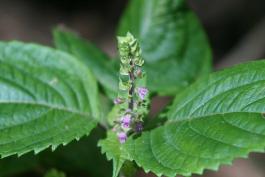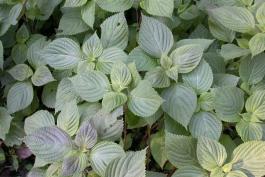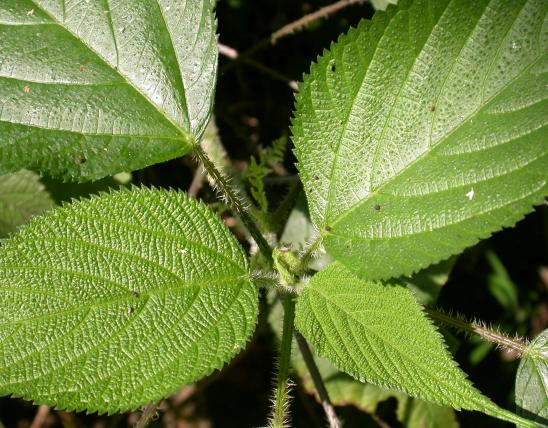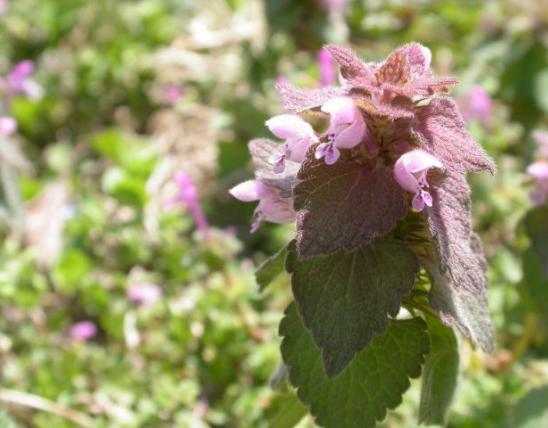
Beefsteak plant is a nonnative, invasive species that should not be planted or allowed to spread. It is a branching, herbaceous annual that can be green, deep purple, or various shades in between. Purplish plants look something like garden coleus.
Flowers are small, white or light purple, in elongated, spikelike clusters to 6 inches long, arising from leaf axils, with each flower on a short stalk subtended by a tiny leaflike bract. The calyx has 5 pointed lobes; the corolla has 5 rounded lobes. Blooms August-October.
Leaves are opposite, on long stems, large, soft, ovate to oblong, coarsely toothed, the upper surface indented with veins, the lower surface with raised veins. Foliage is green or shades of purplish brown, highly aromatic.
Stems are lightly hairy, 4-angled, often purplish even on green plants.
Similar species: The many types of garden coleus tend to have leaves with rounded, not sharp teeth, with usually green or yellow banding or other marks on the leaves. Coleus leaves and stems tend to be thicker, and the flowers are different, too. Coleus rarely escapes cultivation.
Height: to 3 feet.
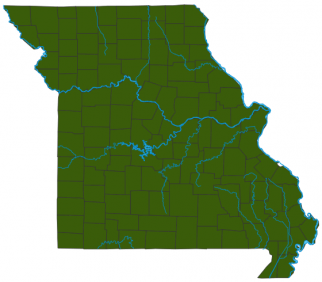
Occurs south of Missouri River, except north of it in a few eastern counties. Cultivated statewide.
Habitat and Conservation
Found in moist or dry wooded bottomlands, open valley pastures, and along trails, railroads, and roadsides. A native of India and China, this annual herb was introduced as an ornamental and is widely naturalized. It spreads invasively in our state and should not be planted or allowed to spread. It reseeds abundantly. Unlike other (perennial) garden mints, it does not spread by runners. Red varieties develop the deepest color in bright sunlight.
Status
Beefsteak plant is a nonnative, invasive species that should not be planted or allowed to spread.
Although it is cultivated for human consumption worldwide, this species is toxic to cattle and other ruminants, plus horses, causing acute respiratory distress syndrome, also called panting disease.
Some people may develop a skin rash from handling this plant. Eating too many seeds can cause an allergic reaction in some people.
This species has many common names in different languages. The Japanese call it shiso, for example. In America it is called Chinese basil and perilla mint, but as Japanese cuisine becomes more popular here, more are calling it shiso. Because it originally came to America as an ornamental, it is sometimes called summer coleus. It's called beefsteak plant because the darkest varieties are as red as steak. It's called rattlesnake weed because of the rattling of the dried seed capsules.
Human Connections
Cultivated for centuries in Asia. Its seeds contain an edible oil that is also used as a lacquer. The leaves can be eaten as an herb or garnish and are popular with sushi chefs. The red varieties are used as a natural food coloring for Japanese pickled plums. Wild strains may be less tasty.
Ecosystem Connections
This plant was apparently introduced to the United States in the middle 1800s. Like so many other nonnative introductions that can escape cultivation, each colony growing vigorously in the wild represents a place where our native plants cannot compete.


